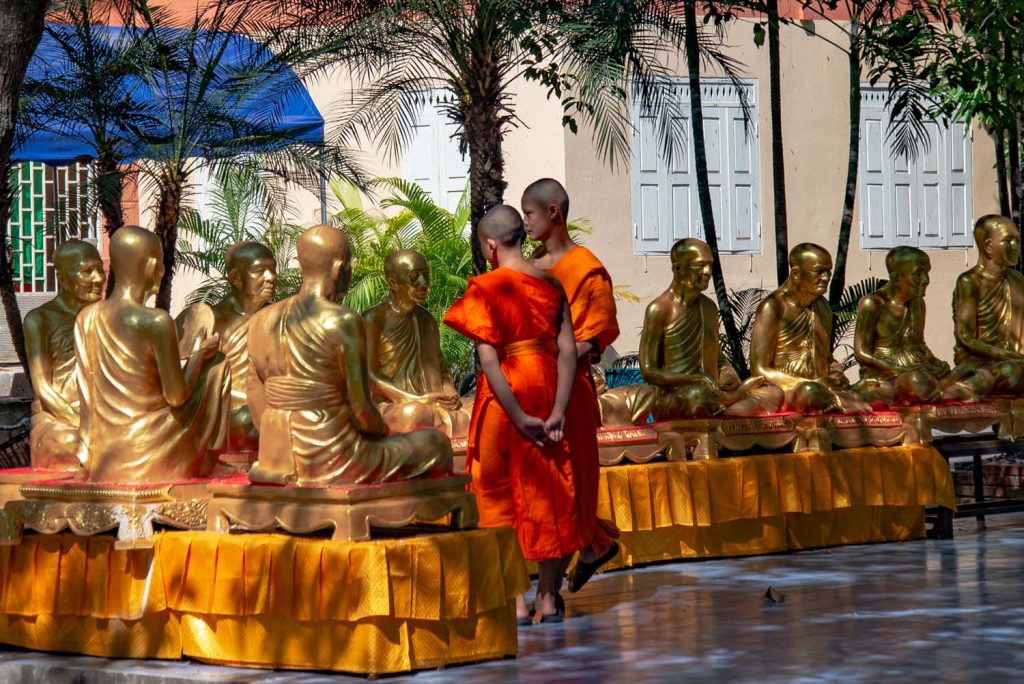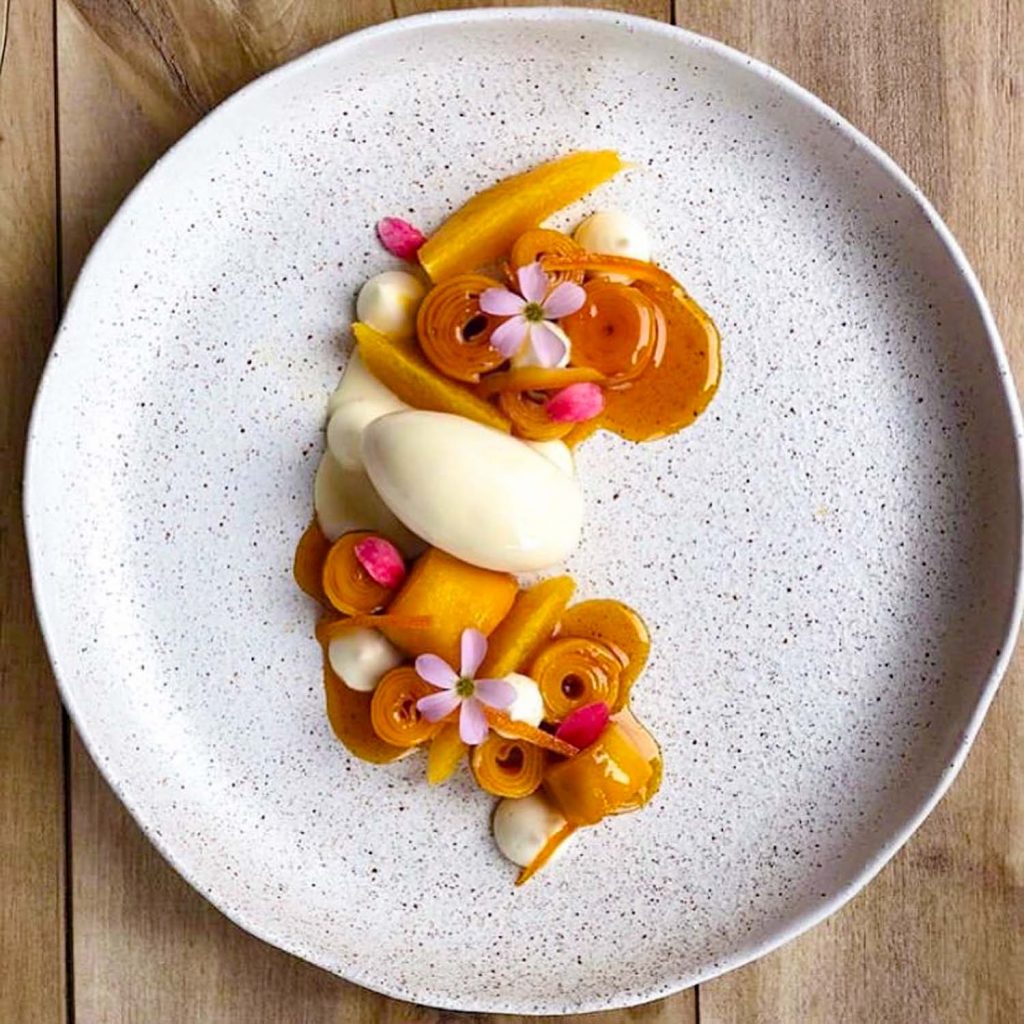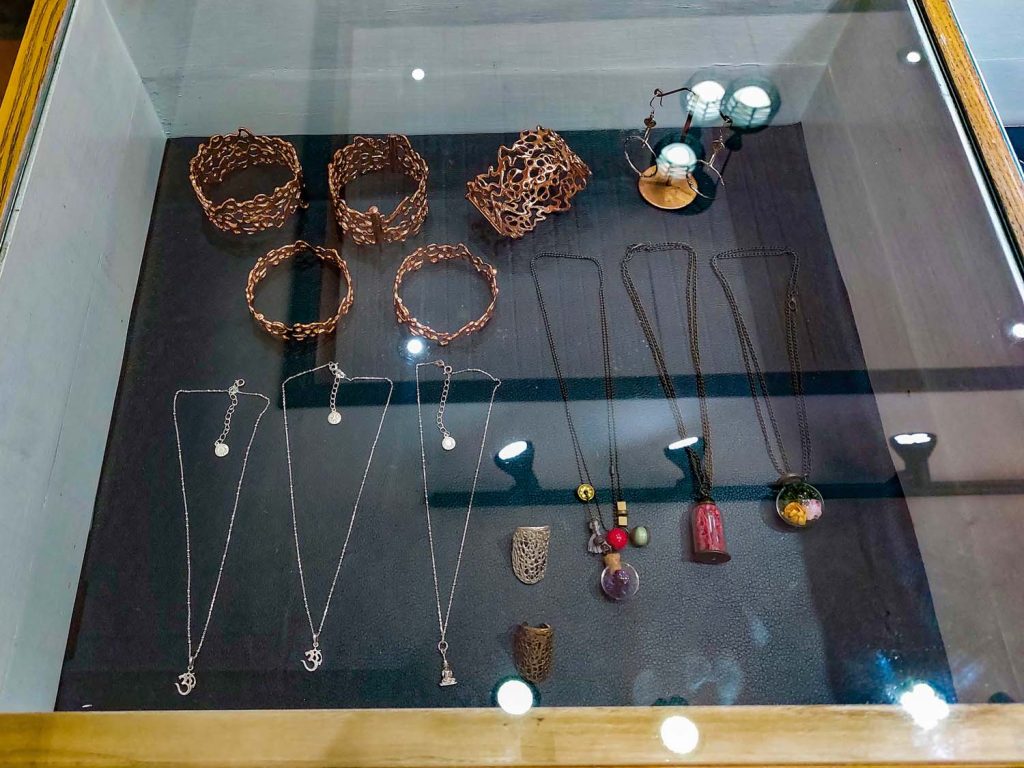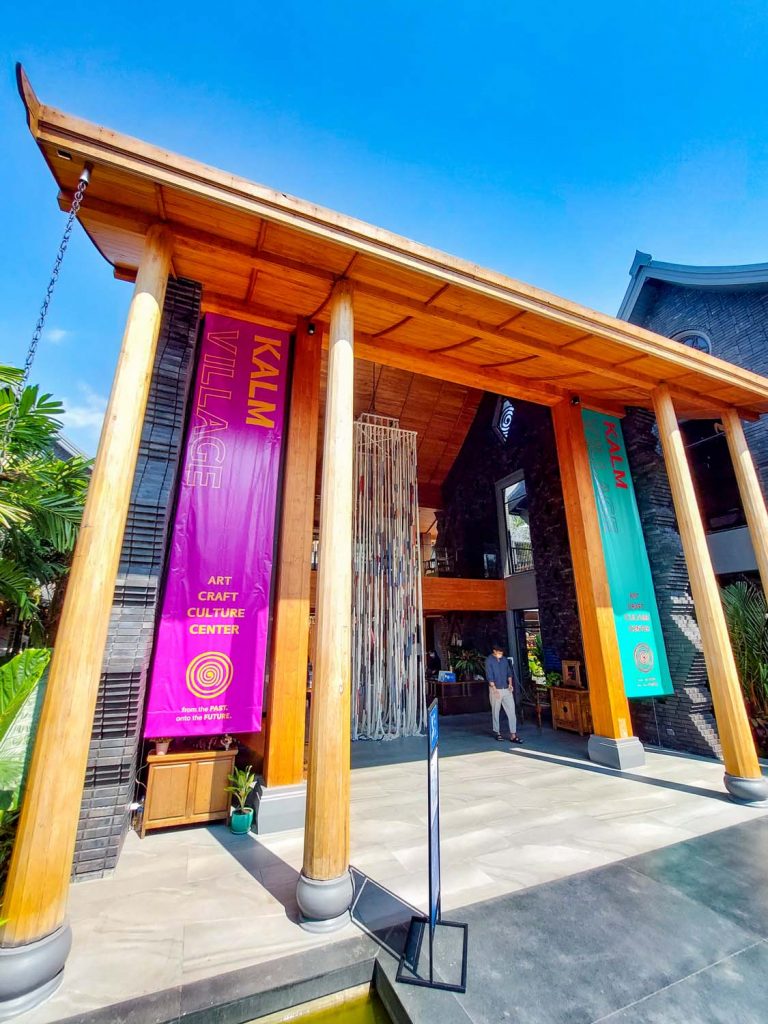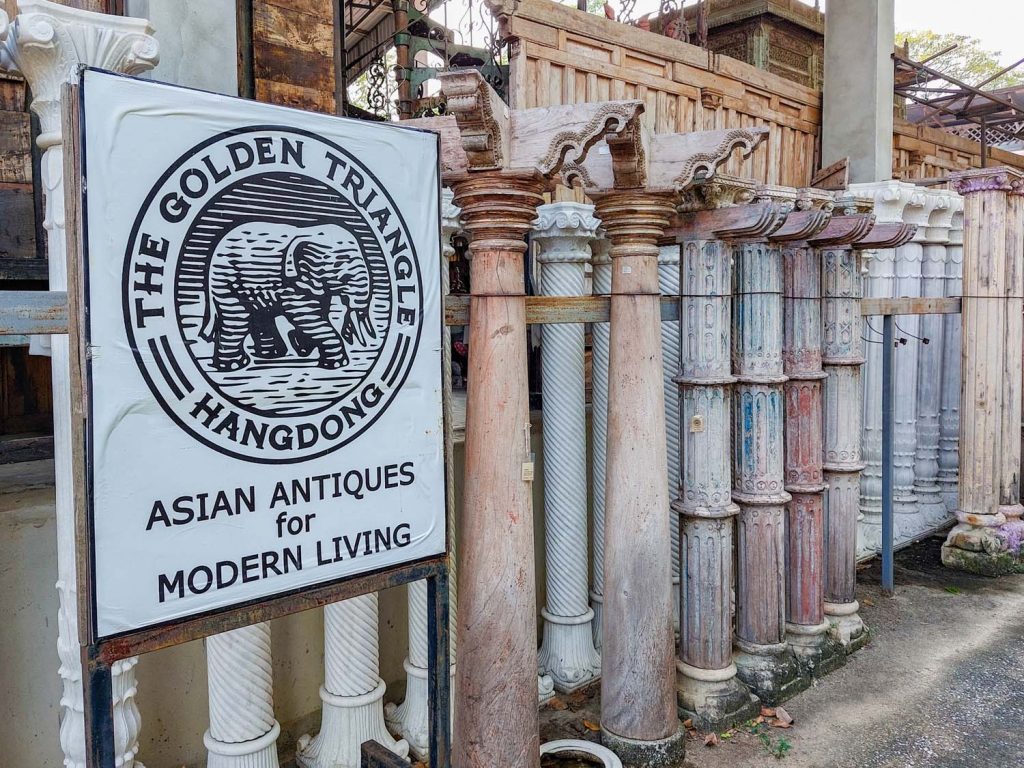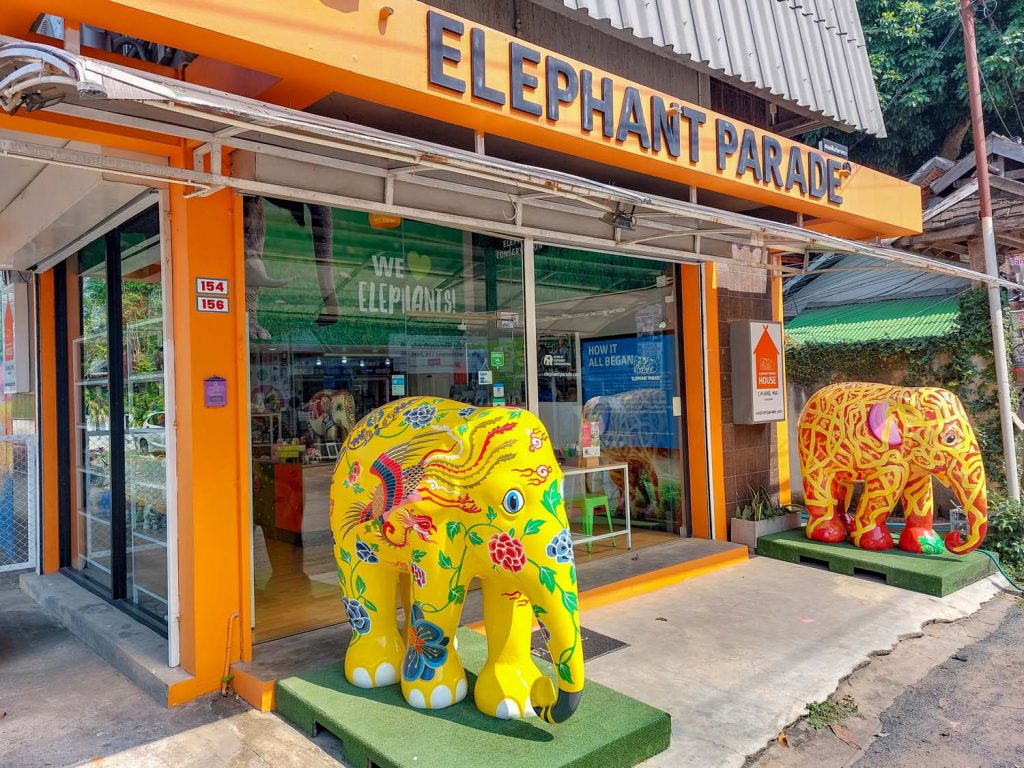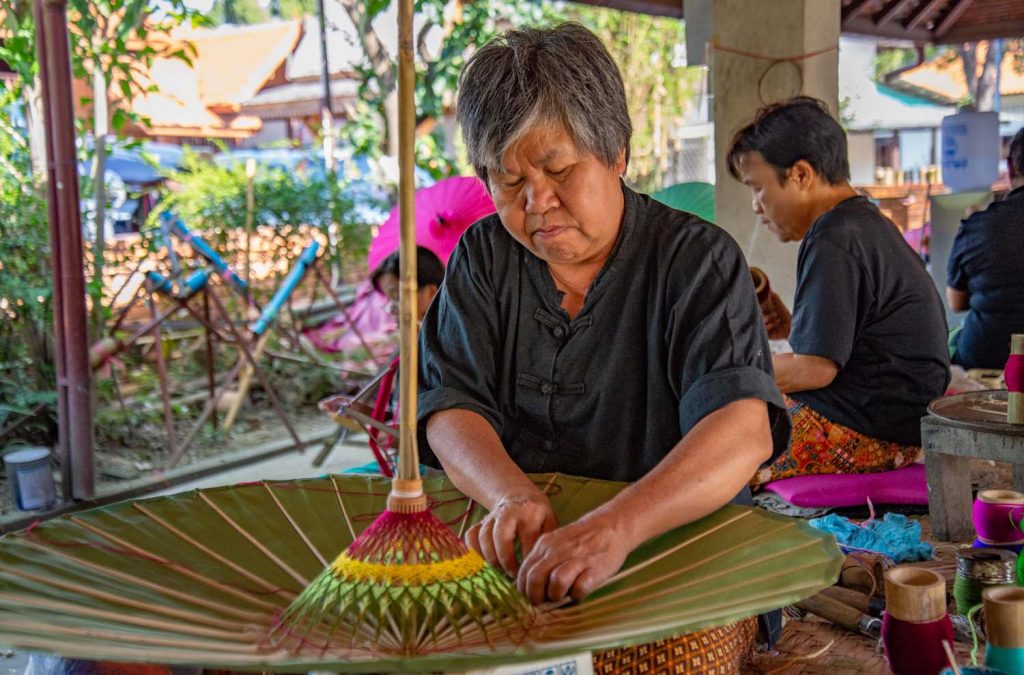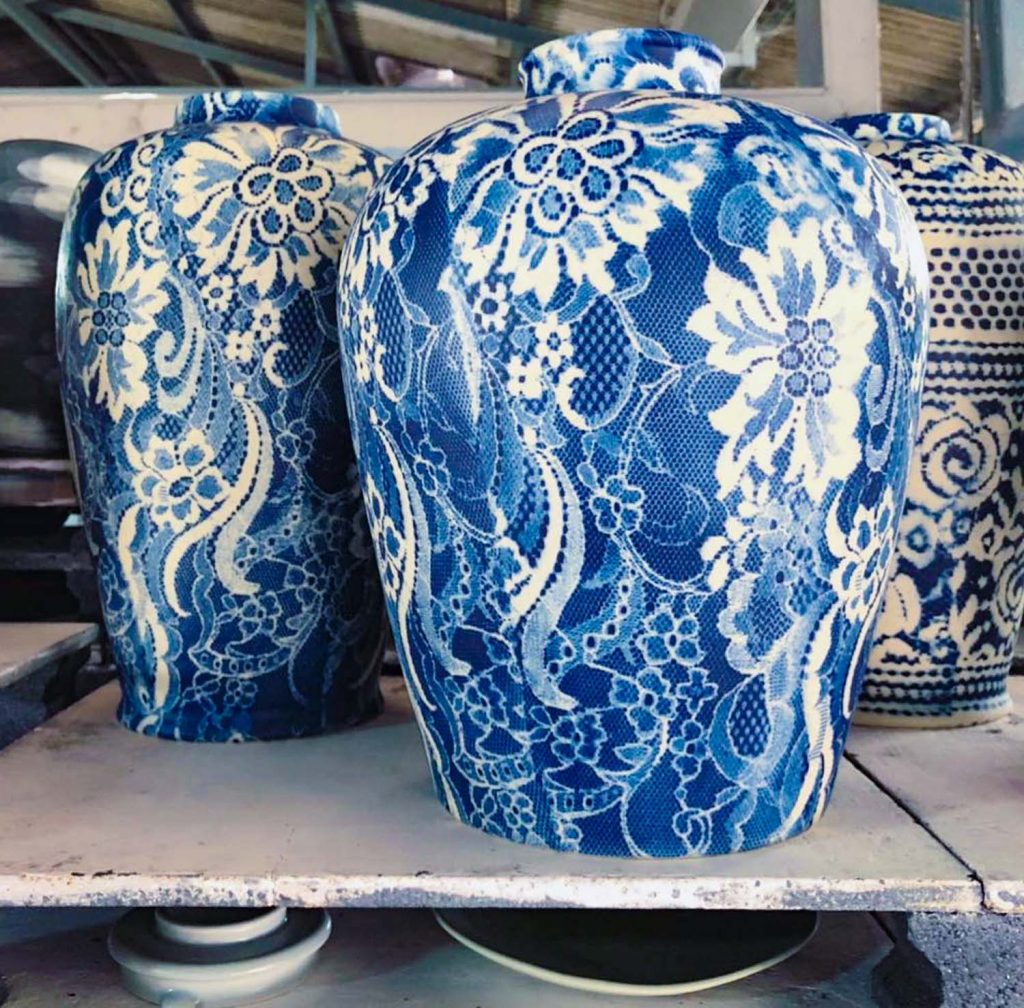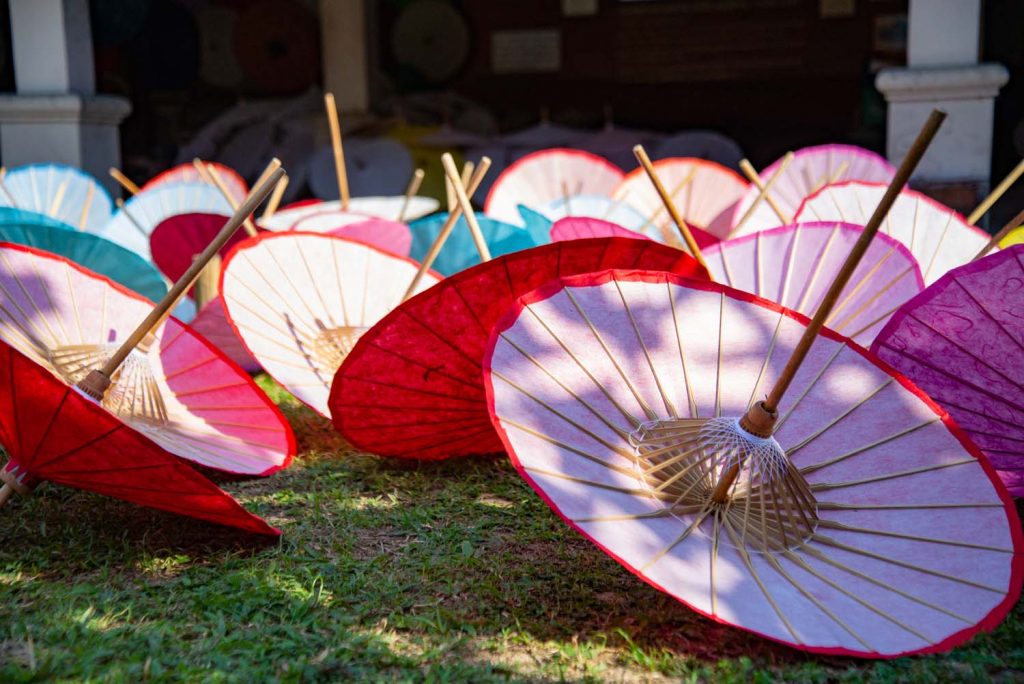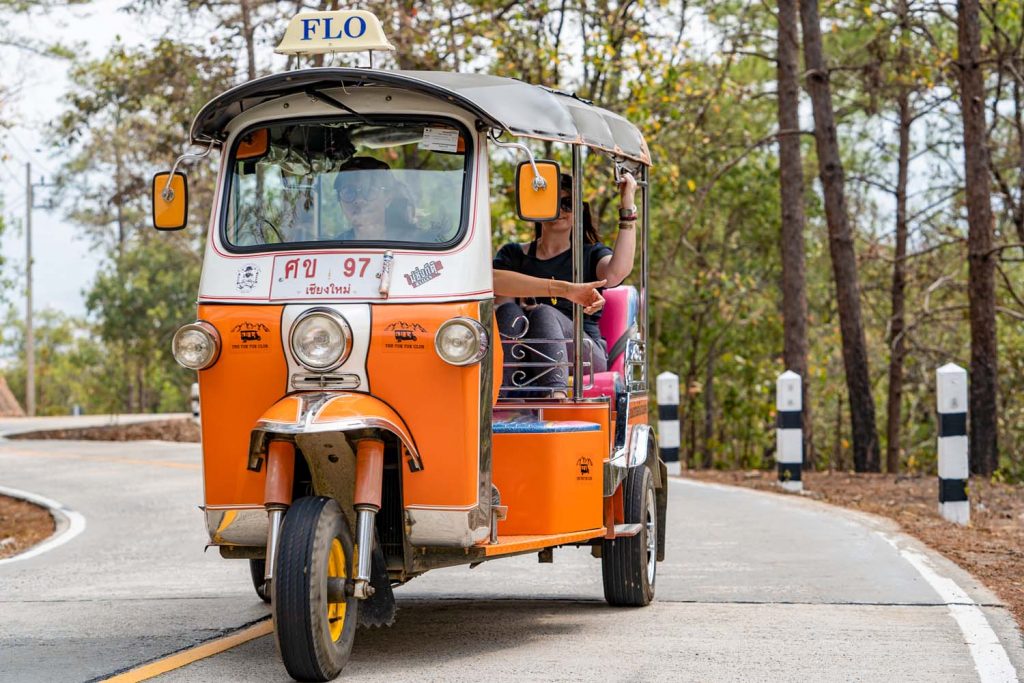Chiang Mai, the ancient capital of the Lanna Kingdom, yet modern and cosmopolitan, is one of the most romantic destinations in Thailand. Nicknamed the “Rose of the North”, she is the ideal destination for fun-filled, active, and opportunity-rich holidays, especially for couples.
Travel Writer Michael Cullen shares the best of Chiang Mai for couples.
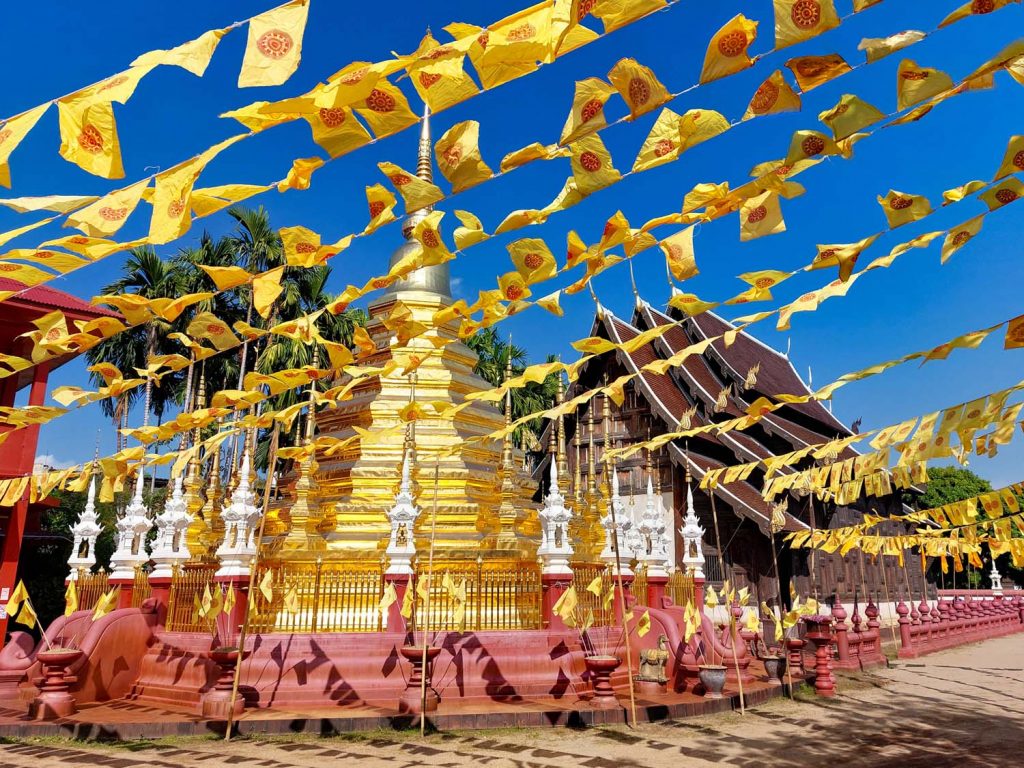
Her lush green fields, towering mountains, languid waterfalls, ancient temples, great food, swanky bars, serene spas, bountiful boutiques, and inspiring galleries add to the romantic atmosphere. For couples, Chiang Mai offers an abundance of opportunities for ‘we time’ making memories as you discover new places, share new experiences, and learn new things – together!
Read on for inspiration and ideas to make for a most memorable visit.
The Lanna Backstory
Before delving into all things Chiang Mai, let’s put some context to its history. Situated in a vast valley alongside the Ping River at the foot of Doi Suthep (Suthep Mountain), the construction of Chiang Mai (literally meaning “New City”) began in 1296. All fortified with thick brick walls and a watery moat.
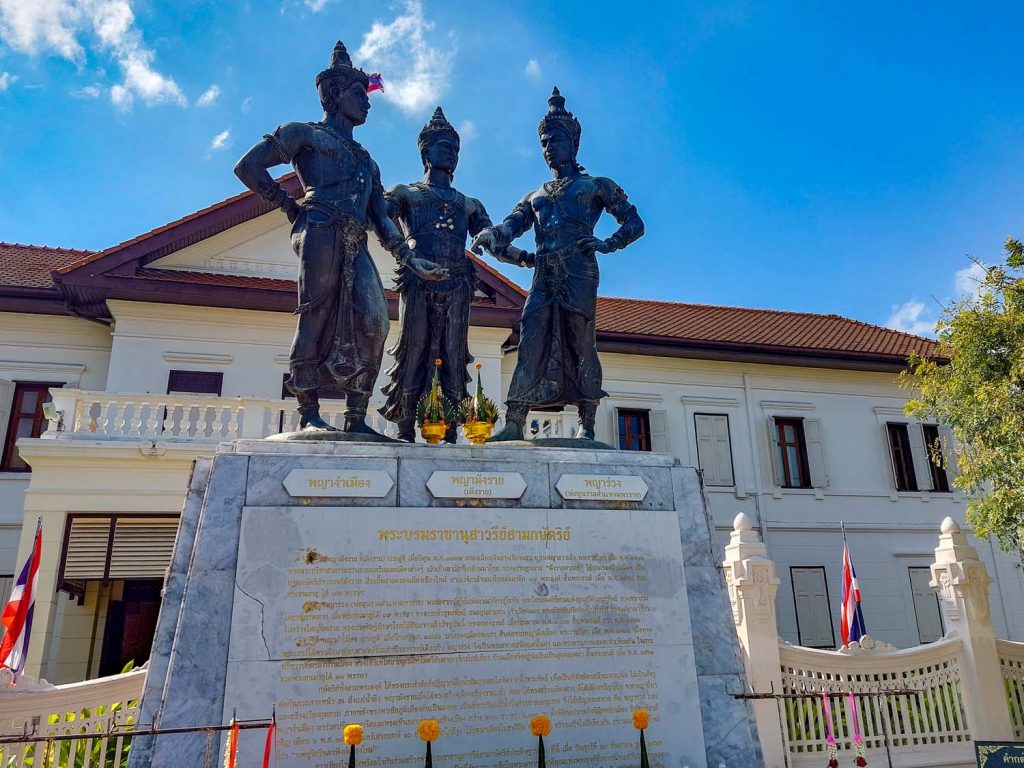
King Mengrai, who held sway over the northern provinces from his previous capital of Chiang Rai, chose this new location for the capital of ‘Lan-Na’. It was not till the 1780s that the independent-minded north became part of Siam (now Thailand). Despite that assimilation, Lanna history, culture, arts, crafts, and cuisine remain ever-present. The interactive and informative Chiang Mai City Art & Cultural Center immediately behind the Three Kings Monument in the middle of the Old Town is an ideal place to dig further into the history and evolution of the Lanna kingdom.
Another aspect of northern Thailand’s backstory is its hill tribes. Descendants of nomadic wanderers from Tibet, China, and Laos – the Lisu, Lahu, Akha, Hmong, Karen, and Mien tribes have long called the tangled green mountains stretching along the north’s border with Myanmar (Burma) home.
Chiang Mai City Highlights
How do you prioritise the Chiang Mai City highlights to make your visit the most memorable with so much on offer? Here are some suggestions under broad headings to help develop your own couple’s plan.
Temples
Buddhism is an integral aspect of Thai people’s lives, so gaining some appreciation may also provide a deeper understanding of life in the “Land of Smiles”. Temples are an excellent place to start, and greater Chiang Mai has some 300 ‘wats’. Their distinct architectural styles are richly decorated and often have beautiful mural paintings depicting scenes from the life of the Buddha.
In the heart of the Old City, Wat Chedi Luang is an excellent example of this. Its massive brick stupa is 80 meters high and was once the tallest building in the Lanna Kingdom when built in the 1400s. This temple once housed one of Thailand’s holiest Buddhist statues, the Emerald Buddha, which now resides in Bangkok’s Grand Palace.
Ten other historical temples are within a square kilometre of Wat Chedi Luang, including the visually impressive Wat Phra Singh, dating from 1345. Home to Phra Phutthasihing, Chiang Mai’s most sacred Buddha image, which is paraded in a procession around town during the Songkran festival (Thai New Year). According to traditional belief, locals bathe the image with scented water, bringing good luck.

A few hours of meandering these central Chiang Mai temples will give some insights into the city’s history (and modern-day life). One aspect we love about Wat Chedi Luang is their “monk chats”, where people have the opportunity to sit and chat with monks about life – theirs and yours. It could be easy to get ‘templed out’, so select a few, take the time to absorb the details and observe the rituals of people who come to make offerings. And do show respect by following the modest dress requirements. After all, that’s part of the whole experience.
Markets
In many cultures worldwide, markets have long been essential aspects of daily life and remain true in modern-day Thailand. Here are a few worth your time.
Warorot Market is the largest market in the north featuring fresh fruit, vegetables, meat, preserved foods, ready-to-eat and more. Located just outside the Old City adjacent to the Ping River, this is the ideal place to see where the locals shop, work and eat. On the riverside of the building is the flower market with bursts of colour and heady scent. On the other side of the main market buildings, you will find local products and handicrafts of the Hmong (hill tribe) people in the alleys and laneways. Away from the river, the streets abutting Warorot blend into Chiang Mai’s Chinatown, adding another reason to explore this area.


The Wua Lai (Saturday) Market is opposite the Chiang Mai Gate and extends along Wua Lai Road. Opening every Saturday from 4 pm, you can browse the goods on display, bargain with vendors and wander freely without traffic worries. Before sundown, visit Wat Sri Suphan (Silver Temple) to admire its intricate decorative elements and capture the late afternoon light reflecting off its shimmering structure. Wua Lai Road is also known as ‘silver street’ due to its Silversmith shops, with plenty of original designs of silver, copper and other jewellery creations. Great gift inspiration for you or your loved ones.
Stretching from Tha Phae Gate, the Sunday Market (or Walking Street) in the centre of the Old City extends for roughly 1 km down Ratchadamnoen Road. This highly popular market showcases Northern Thai art and craft, tasty Thai treats, with many vendors making and selling their products. Open every Sunday from 4 pm.
Foodie Delights
Some of the most popular northern Thai dishes worth seeking out include Gaeng Hung Lay curry, Sai Oua sausage, Nam Prik Noom Kab Moo (green chilli dip and Pork Cracklings), the noodle and pork dish Kanom Jeen Nam Ngiew, and perhaps the poster child of northern Thai cuisine, Khao Soi. This coconut-based curry broth, egg noodles, and chicken thighs (or beef) are topped with a tangle of nest-like crunchy fried noodles. Many eateries, from simple to up-market, will have variations of these and other northern Thai favourites for you to sample.
With such a choice of eateries, it’s a challenge to make Chiang Mai dining recommendations, and it will depend on your location, specific dietary considerations and budget. That said, three that regularly impress – The House by Ginger for rustic Thai in a lovely setting in the Old Town, RedBox for that special lunch or dinner near Nimman, and innovative Blackitch for contemporary Asian in Nimman’s Lane 7.
Thailand’s Michelin Guide is always a reliable resource on where to eat. And no, Michelin Guides are not just about expensive fine dining affairs. In fact, twenty of the sixty eateries listed in Michelin’s Chiang Mai guide specialise in street food and Northern Thai cuisine. Many with main dishes for less than 100 THB (around 4 AUD). An essential reference!
Coffee – Thailand is in the top 20 coffee-producing nations, though it only started growing the highly prized Arabica beans commercially in the 1970s and became an exporter in 1976. The excellent news for coffee-loving visitors is Chiang Mai’s coffee culture is strong and easily accessed. Beans from the neighbouring high mountains straight to the city’s trendy cafes.
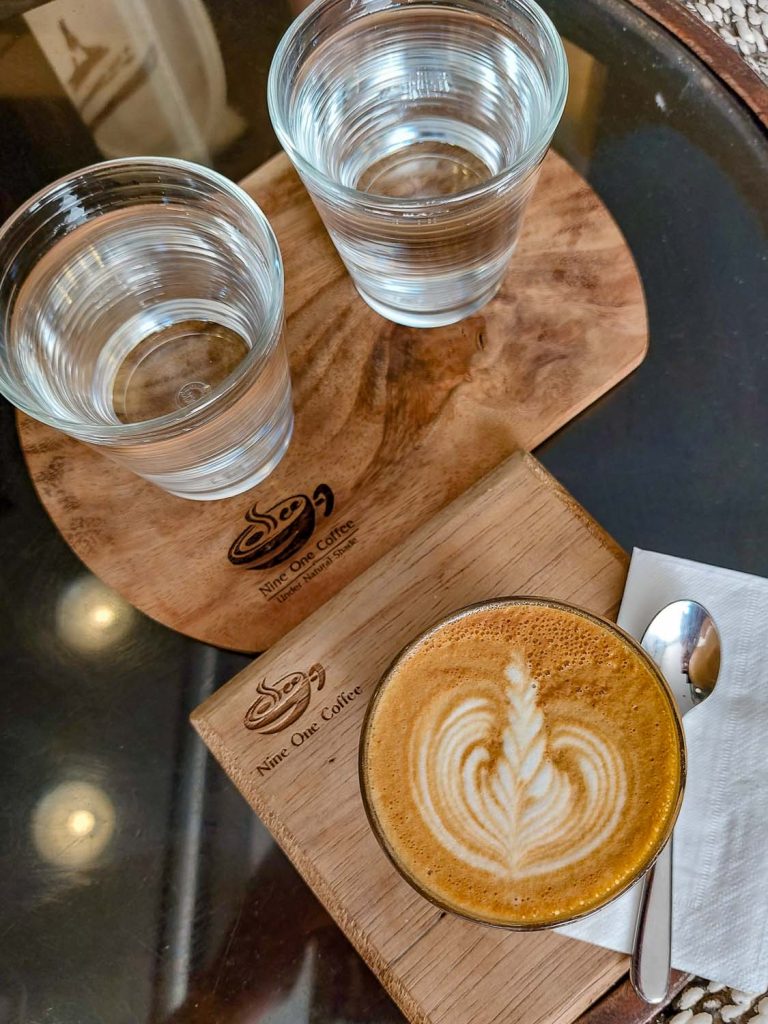
Coffee lovers visiting the always popular Nimman region, in particular, will find they are spoilt for choices. Standout venues include Nine One Coffee, Ristr8to, and Roast8ry, with their busy cafés and separate dedicated roasting facility. Akha Ama is a socially responsible co-operative helping the Akha hill tribe communities across the north grow and distribute their coffee direct to market, meaning the full benefits of their farming effort return to them. Of their three café outlets in Chiang Mai, Akha Ama La Fattoria in the middle of the Old Town, is the easiest to find.

Bars – if skilled mixologists, craft cocktails, and cool beats in the right atmosphere are your style, check out these three gems. Caravan Bar in trendy Nimman’s Lane 9, The White Rabbit, a speakeasy hidden away in the Old Town not too far from Chang Phuak Gate, and in an industrial grunge style laneway off Ratchawong Rd on the Ping River side is Looper &Co., an espresso bar by day and cocktail bar by night.
Shopping Precincts
Silverware, textiles including silk, ceramics, lacquer, and woodwork from the intricate to enormous and ancient are all products synonymous with the north. Whether visitors are looking for memorable souvenirs, amazing homewares, distinct fabrics for that something (or someone) special, or even unique Asian antiques, the Chiang Mai region has something for you.
Located in Chiang Mai’s Old Town, Kalm Village opened in May 2021 and is four connecting buildings, each with a distinct architectural story, enclosing a large central courtyard. It tells fascinating stories of artisanship through a permanent collection of wickerwork, ceramics, textiles and jewellery and a roster of art and crafts workshops and exhibitions. But it doesn’t stop there. Their enticing café, library, home-style restaurant offering amazing lunch sets, and concept stores incorporate glorious textiles into clothing and homewares. This hub of Thai creativity is worth your time.
Charoenrat Road, with its boutique hotels, and riverside restaurants in the Wat Ket Karam area, is another must. Expect designer handicrafts, textiles, clothes, antiques, homewares, ornaments, arts, and souvenirs, many incorporating hill tribe designs. Check out Oriental Textiles, Vila Cini, The Healing Family Foundation, and Elephant Parade House, with Woo Cafe & Gallery, an excellent option for lunch or refreshments. Located directly across the river from Warorot Market with a pedestrian bridge, Charoenrat Road is easy to access.
One Nimman is located at the beginning of Nimmanhaeminda Road and is an impressive architectural statement as you enter the hip Nimman region of Chiang Mai city. The distinctive clocktower at the front and central open-air piazza where live performances and boutique markets are regularly staged are great first impressions. The grand Galleria with vaulted domed glass ceiling, shops, cafes and restaurants feels like you are transported to Florence or similar.
San Kampang region is around 15 km east of central Chiang Mai. It is where you will see traditional bamboo and paper umbrellas made from scratch at Bo Sang Umbrella Village. Their two-day Umbrella Festival in January each year is a riot of colour and fun. Home Decor and plate-like-a-MasterChef enthusiasts need to visit the impressive Prempracha Collection showrooms neighbouring the umbrella village. This near warehouse-sized outlet is the home to locally crafted exquisite fine stoneware ceramics and is a favourite.
Hang Dong region is just 15 km southwest of central Chiang Mai and is the best place for excellent Thai furniture. The village of Baan Tawai produces all kinds of wood furniture, including the famous rattan. Or seek out the sprawling two-hectare Golden Triangle Hang Dong, a cluster of buildings arranged around courtyards and tree-shaded pathways. This is perhaps, Chiang Mai’s largest single source for fine antique furniture from Thailand, Myanmar, China, India and Pakistan.
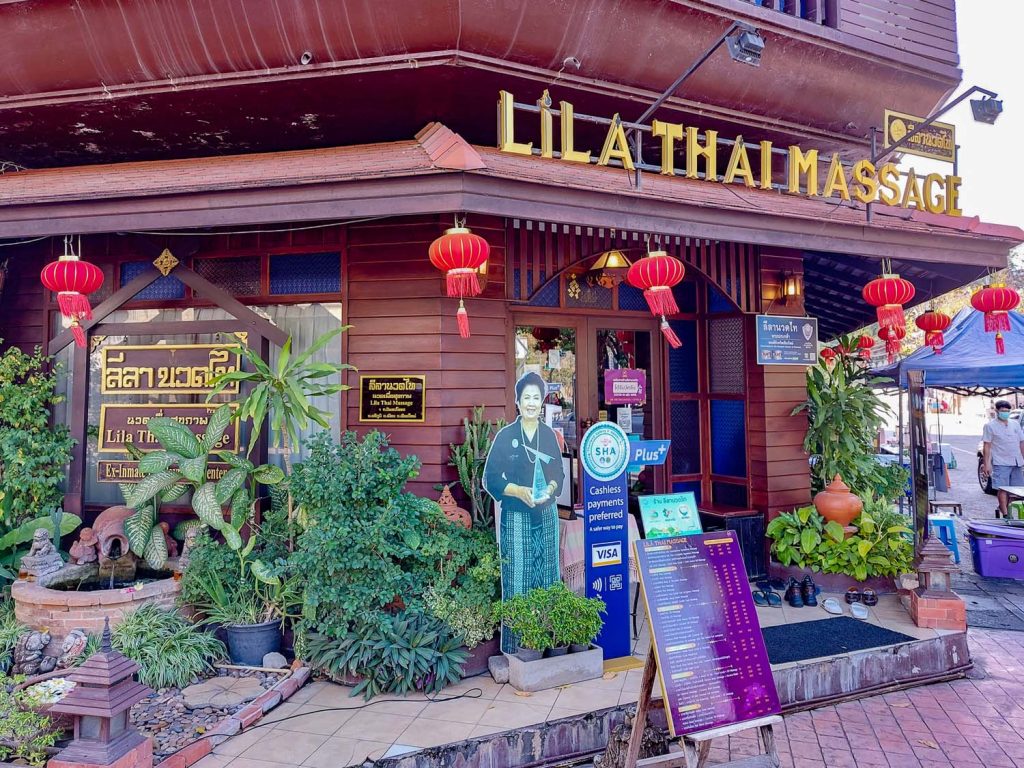
Spa & Wellness
For some romantic pampering, destressing and relaxation, Chiang Mai has some of the best spas in Thailand, many with a Lanna slant. Your hotel may have on-site facilities, and here are some external options worth considering. Lila Thai Massage has two conveniently located studios in the Old City offering an extensive treatment menu and is our first choice whenever we need a massage. Oasis Spas have Day Spas in the Old Town and Nimman, both in striking buildings and recommended if you feel the need for even more luxurious, refined treatments and pampering.
Chiang Mai Day Trips and Excursions
Get away from Chiang Mai city. You have nature parks, waterfalls, botanical gardens, glorious temples like Wat Phra That Doi Suthep, Royal Palaces, hill tribe communities, tea plantations, and much more to see and experience, including Thailand’s tallest mountain at 2565 metres, Doi Inthanon. You can do multi-day trekking, zipline through a Gibbon Forest, or welcome the dawn Hot Air Ballooning. You are spoilt for choices!
Here are some recommendations we find compelling. Although not necessarily the norm, they allow you to create special memories together.

You will find many elephant camps offering a variety of experiences across northern Thailand. However, Elephant Nature Parkleads the way thanks to its ethical approach to handling, caring for and interacting with these rescued giants. Day visits and overnight stays, including return transport, are available. Or you can volunteer for a week, staying on-site for a fully immersive experience.
Just a few kilometres from the elephant park is Araksa, an organic tea plantation growing Assam tea and producing award-winning teas in several varieties. Go for the hands-on and interactive tour and tasting; stay for a bite in this very tranquil location.
Imagine piloting a Tuk Tuk while discovering one of the north’s lesser-visited regions, Mae Hong Son. Yes, you drive your own custom-built Tuk Tuk (or be driven) on 1, 3, 5, 7 or 11-day inclusive guided tours. This beautiful province has much to offer, including huge mountains, deep forests, rivers, mountain communities, fascinating temples, fabulous food and loads to do for the active traveller. Tuk Tuk Club tours help you discover this part of northern Thailand in a totally memorable and quintessentially Thai way – on a Tuk Tuk!
Where to Stay
Once again, choices abound, from family-run Guest House in the backstreets of the Old Town to an abundance of hostels and hotels from simple to luxe, historic to ultra-modern.
Here are a few suggestions starting with Away Chiang Mai Resort – a boutique vegan resort built around a central pool and just a few hundred meters outside the Old Town’s Tha Phae Gate. In the middle of the Old Town is Tamarind Village with its ancient trees and exquisite Lanna design – a quiet oasis in the centre of everything. Or for a distinct 5-star stay overlooking the Ping River –Anantara Chiang Mai Resort.
And for a romantic break, in the hills behind Chiang Mai, Onsen @ Moncham. A stylised yet authentic version of a Japanese mountain ryokan and onsen hot baths. Situated in the Mae Rim district, visit neighbouring Mae Sa waterfalls or explore Queen Sirikit Botanic Garden and Canopy Skywalk while in the area.
Chiang Mai, the city, and the region have so much for all types of visitors. We’ve highlighted activities and experiences we feel will make for memorable couple-focused holidays in the “Rose of the North”. We hope you enjoy!
Words and images by Michael Cullen.




